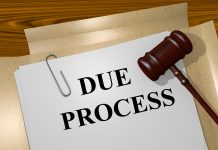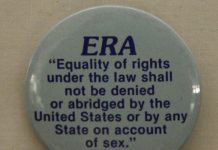12 Facts about the Secret Court that most people do not know.
A public outcry over the actions of the country’s secret surveillance court, known as the FISA court, has pushed members of Congress to question how the court needs to be reformed. Two of the most pressing concerns have to do with increasing the transparency of the court so that the public has a better idea of how and why it operates, and changing the way the judges who serve are selected.
As the debate gathers momentum, all Americans would do well to know more about what’s behind the controversy, and what other changes might be desirable. After all, what’s at stake is our own civil liberties. The following 12 facts are at least a starting point.
1. The court was created in 1978, not, as some might suppose, after 9/11.?Ironically, it’s sole purpose at the time was to keep the government from abusing its surveillance powers. Specifically, the court’s function was to review requests for wiretaps by the FBI. The target of the wiretaps had to be either foreign terrorists or spies.
2. Under the Bush administration, the role of the court changed to one of interpreting surveillance laws and constitutional rights. In effect, the court now does something it was never intended to do; it creates policy. That was recently confirmed in a talk given by a former member of the FISA court, Judge James Robertson, and cited in the New York Times.
3. The FISA court order that Edward Snowden leaked to the media, and which asked for a complete 3-month record of phone company Verizon’s domestic customers, is the first order from the court that has ever been seen by the public in its 35 year history.
4. The judge who signed the order for the Verizon records to be obtained was federal Judge Roger Vinson, better known for having attempted to strike down the entirety of President Obama’s Affordable Care Act in 2011.
5. The court only hears one side of a case–ever. That’s the government’s side. There are no lawyers who present the other side, nor is there a presentation of the case for protecting civil liberties. The amount of public scrutiny is zero. The adversarial process upon which our justice system relies, in order to arrive at balance and fairness, is totally absent.
6.? Chief Justice John G. Roberts appointed all 11 of the judges who currently serve on the FISA court, and he will continue to do so for his lifetime or until he resigns his position. The composition of the bench is completely in his hands.
7. Ten of the 11 judges were originally appointed to federal courts by Republican presidents–and 10 of the 11 judges are Republicans.
8. The judges serve 7 year terms. Therefore, Justice Roberts has already appointed 13 judges to the 11 member court because he has replaced judges whose terms expired.
9. While the 4th Amendment is supposed to protect Americans from unreasonable searches and seizures, the court has, in secret, carved out an exception to the Amendment–without public or Congressional review or input–according to intelligence officials quoted in the New York Times.
10. Rarely does the court see a request for surveillance that it doesn’t like. Over an 11 year period, 20,909 requests were approved while only 10 were denied.
11. In increasing numbers, judges who are appointed to the court have a background as lawyers for the executive branch of the government–the same branch from which the requests for surveillance come. As summed up by Senator Richard Blumenthal, D-CN:
Viewing this data, people with responsibility for national security ought to be very concerned about the impression and appearance, if not the reality, of bias–for favoring the executive branch in its applications for warrants and other action.
12.?There is no appeal of a FISA court decision. The judges’ word is final. The Supreme Court–supposedly the final arbiter of the law–does not have a say.
From how the judges are selected, to their backgrounds, to the secrecy that prevents all sides from being heard, to the amount of power that rests in one man’s hands, there appears to be an amazing amount of room for not only bias, but also abuses. We have a history in this country of the abuse of power, especially when it is wielded in secret. Former FBI director J. Edgar Hoover is the prime example.
Now that we know how real the potential is once again, what are we going to do about it?
Edited and published by CB





